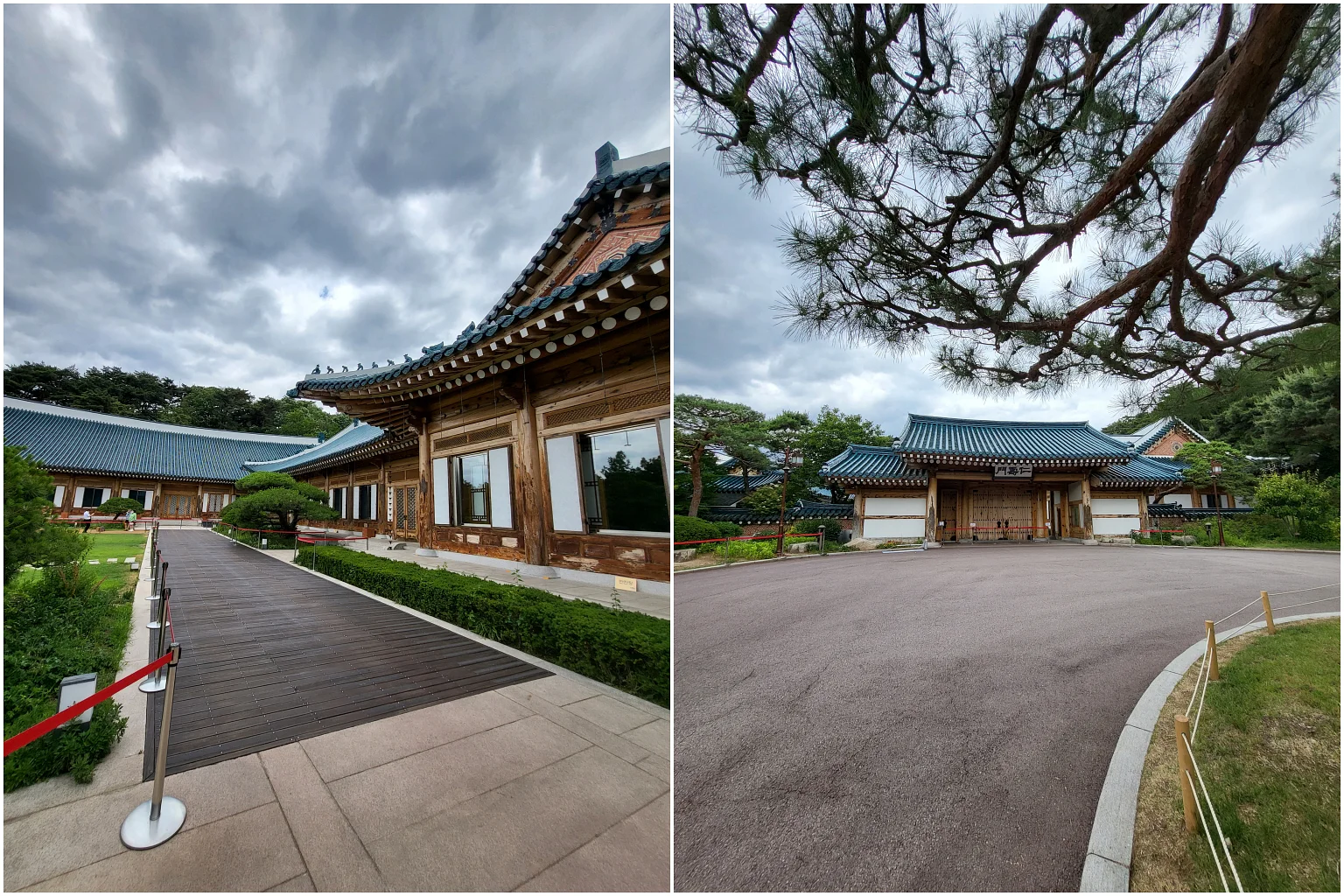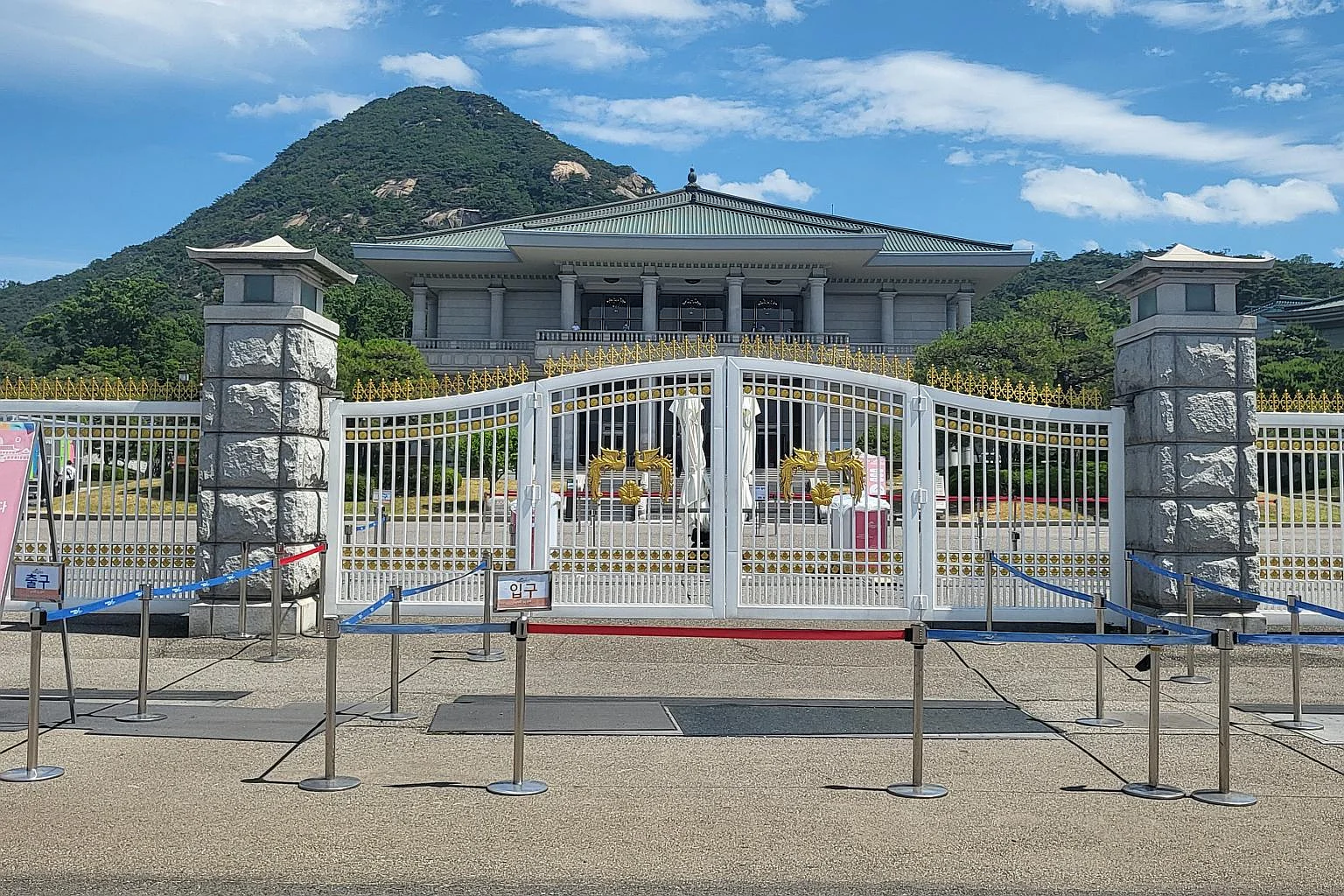June 20, 2022
SEOUL – For seven decades, South Koreans could see only the iconic blue tiled roof of their president’s office from afar.
Cheong Wa Dae, also named the Blue House because of its distinctive roof, was a heavily-guarded place shrouded from view by lush trees.
But last month, it was vacated and “returned to the people” as newly-inaugurated South Korean President Yoon Suk-yeol promised.
The sprawling 250,000 sq m compound is now getting a new lease of life as a concert venue and tourist hot spot.
K-pop star Rain staged a solo concert there last Friday (June 17) as part of a new Netflix show, becoming the first to do so.

K-pop star Rain posted photos taken at the Blue House when he announced that he will stage a solo concert at the former presidential office on June 17. PHOTOS: RAIN_OPPA/INSTAGRAM
A new “Visit Korean Heritage” campaign lists the Blue House as one of 10 must-visit sites for tourists and has planned promotional activities such as a concert in August and a digital media art show in October.
Open to the public from May 10, the Blue House has drawn more than 770,000 visitors in a month, all curious for a glimpse into the life of their former leaders.
Key attractions include the main office building, the official residence inside a hanok (Korean traditional house), the state guest house, and a garden boasting 120 species of trees, many of them planted by former presidents.

The official residence housed within a hanok (Korean traditional house), found inside the Blue House compound. ST PHOTOS: CHANG MAY CHOON
Blogger Kim Min-so was one of those who witnessed the “opening of the Blue House in a moment of history”.
“I’ve only seen the Blue House on television before,” she wrote on her blog. “Seeing it in real life for the first time, I could feel how majestic it is.”
Another blogger who goes by the name Moonlight noted that the inside of the main office building looks like a palace and “there’s a lot of old-fashioned charms everywhere”.
Situated at the foot of Mount Bugak, the Blue House site was once the private rear garden of Joseon dynasty (1392-1910) kings who lived in the main palace Gyeongbokgung.
The Japanese colonial era saw the construction of a blue-roofed official residence for its highest-ranking official in 1939, after which it was occupied by generations of South Korean presidents post-independence, from 1948.
The current main office building was completed in 1991, designed to look like palaces of the Joseon dynasty. About 150,000 blue tiles were created specially for the roof.

People visit the presidential Blue House that is open to public in Seoul, on May 10, 2022. PHOTO: REUTERS
The opening of the Blue House to the public marks the end of an era of presidents who lived and worked in such seclusion that they were criticised for being out of touch with the people.
President Yoon, who called the Blue House a symbol of “imperialistic power”, has shifted his office to a more accessible location in Yongsan.
No decision has been made yet regarding the future of the compound. The Cultural Heritage Administration, which is now managing the compound, has said it will draw up a plan to “make the Blue House a symbolic historical and cultural space of the country where history and the future can coexist”.
Officials said it could be turned into a park or museum, while scholars put forth ideas such as turning it into a library, a venue for cultural festivals, and a K-pop concert hall aimed at drawing foreign visitors.
Experts have urged against hasty decisions, warning that the landmark should not be reduced to a mere space for entertainment.
Mr Choi Jong-deok, former director of the National Research Institute of Cultural Heritage, called for a thorough study of the Blue House compound to help determine the best ways to conserve and utilise the space.
“The Blue House must be reborn as a place where you can meet the history and culture from Joseon to Korea,” he said. “We must find the right balance between conservation and use.”
Noting that some visitors have damaged items inside the Blue House, Professor Choi Jong-ho of the Korea National University of Culture Heritage urged “more active measures to protect and preserve our cultural heritage”, rather than to “just focus on utilisation of the space”.

Visitors can queue outside the main entrance Shinmumun for free entry on a first come, first served basis. ST PHOTO: CHANG MAY CHOON
Singaporean Chen Huiqi, 38, who visited the Blue House in May, said it was an eye-opening experience that she would recommend to friends and relatives who are touring South Korea.
“It’s not an everyday affair – that’s why I found it interesting, especially with the history in it,” she told The Straits Times.
“Usually commoners only see the Blue House in the news. To actually step foot in it is really ‘wow’, cool!”
The Blue House is closed on Tuesdays. On other days, visitors can just queue outside the main entrance Shinmumun for free entry on a first come, first served basis.
Up to 49,000 people are allowed to enter on any day.


